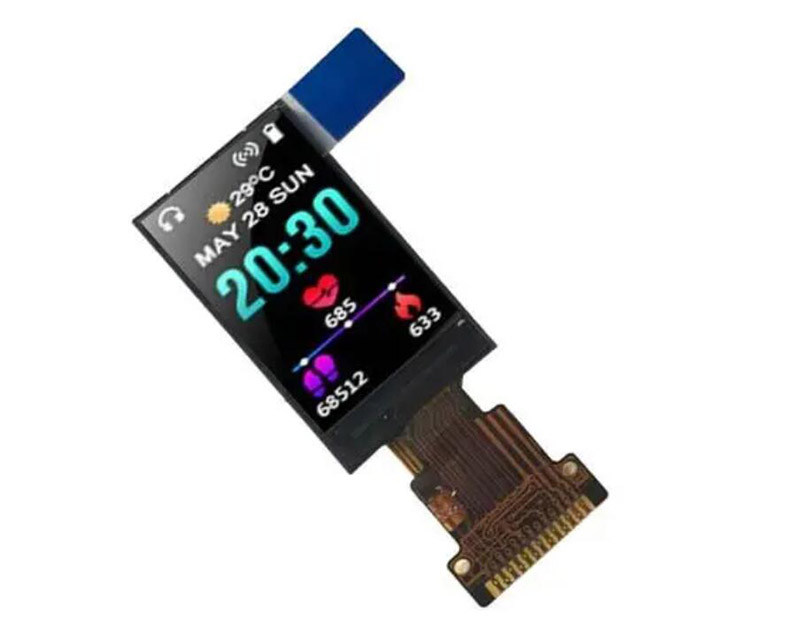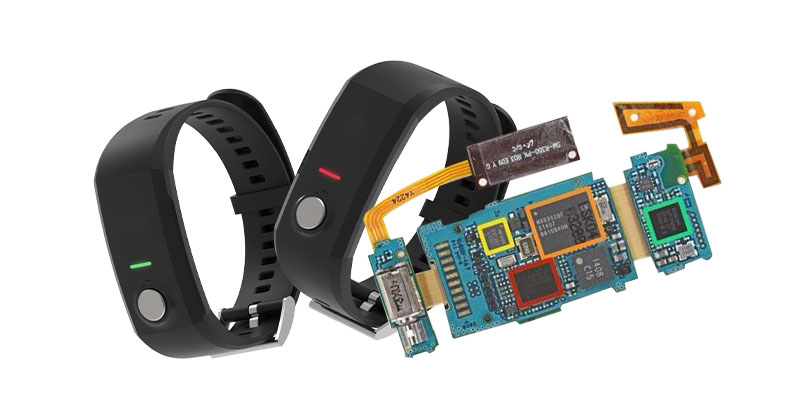AI smart bracelet is a wearable device that usually consists of a bracelet body, sensors, display, battery and circuit board. The smart bracelet senses the user’s body movement, heart rate, blood oxygen saturation and other physiological parameters through the sensors, and processes and stores the data through the circuit board, and finally shows the relevant information to the user through the display.

AI smart bracelet has some parameters and features as follows:
1. size and weight: AI smart bracelets usually have small size and light weight, which are convenient for users to wear and carry.
2. Display: Most smart bracelets are equipped with a display for showing time, exercise data, notifications and other information.
3. Sensors: AI smart bracelets are usually equipped with a variety of sensors, such as acceleration sensors, heart rate sensors, sleep monitoring sensors, etc., which are used to monitor the user’s exercise, health and other data.
4. motion monitoring: smart bracelets can monitor the user’s motion data, such as steps, distance, calorie consumption, etc., to help users understand their own motion.
5. heart rate monitoring: the smart bracelet can monitor the user’s heart rate in real time, helping the user to understand their health condition.
6. sleep monitoring: AI smart bracelet can monitor the user’s sleep, including sleep time, sleep quality, etc., to help users understand their sleep condition.
7. blood oxygen saturation monitoring: some smart bracelets can also monitor the user’s blood oxygen saturation, to help users understand their own health condition.
8. notification reminder: AI smart bracelet can be connected to the user’s mobile phone to achieve notification reminder of incoming calls, SMS, social media and other notifications.
9. Waterproof and dustproof: Smart bracelets usually have a certain degree of waterproof and dustproof performance, and can adapt to daily use scenarios.
The operating environment of the smart bracelet is usually through the connection with the user’s mobile phone, through the mobile phone application for data synchronisation and management. Smart bracelets usually support Android and iOS systems, and require users to download the corresponding applications on their mobile phones.

The production process of circuit boards generally includes the following steps:
1. Preparation of raw materials: Preparation of substrate materials, electronic components, etc. for circuit boards.
2. Printed circuit board (PCB) production: the circuit design is converted into an actual printed circuit board, including etching, copper plating, silk screen printing and other processes.
3. Component placement: electronic components are pasted onto the printed circuit board and soldered.
4. Soldering: Use soldering equipment to solder electronic components to the printed circuit board.
5. Testing: Functional and performance testing of the completed soldered boards to ensure the quality and performance of the boards.
6. Packing and shipping: Pack the tested circuit boards and prepare them for shipping.

When producing circuit boards (PCBA) for AI smart bracelets, you need to pay attention to the following aspects:
1. Choose the right supplier: Choose a reliable circuit board supplier to ensure the quality and performance of the circuit board.
2. Strictly control the quality: In the production process, strictly control the quality, conduct strict quality inspection and testing to ensure the quality of the product.
3. Pay attention to the protection of intellectual property rights: Pay attention to the protection of your intellectual property rights to avoid infringement.
4. Circuit design: The design of the circuit board needs to meet the functional requirements of the bracelet and take into account the size, power consumption, stability and other factors.
5. Power management: Smart bracelets are usually powered by lithium batteries, and the circuit board needs to be designed with appropriate power management circuits to ensure battery life and charging safety.
6. Sensor interfaces: the circuit board needs to provide interfaces for different types of sensors to facilitate sensor connection and data transmission.
7. Data processing and storage: the circuit board needs to have a certain data processing and storage capabilities to achieve the processing and storage of sensor data.
8. communication interface: the circuit board needs to provide a communication interface with mobile phones, usually using Bluetooth or wireless radio frequency technology to achieve the connection with mobile phones.

Testing to ensure its quality and performance:
1. circuit connectivity test: check the connectivity between the components on the circuit board to ensure that there are no short circuits or broken circuits on the board.
2. Power Consumption Test: Tests the power consumption of the circuit board to evaluate the life of the battery.
3. Sensor test: test the accuracy and stability of the sensor to ensure that the sensor can work properly.
4. Communication Test: Test whether the communication between the circuit board and mobile phone is normal, to ensure that the data can be transmitted normally.
5. Reliability test: by simulating the actual use of the scene, the circuit board for a long time stability and reliability test.

To sum up, smart bracelet is a wearable smart device, which consists of mechanical part and electronic part.AI smart bracelet has the functions of exercise monitoring, heart rate monitoring, sleep monitoring, blood oxygen saturation monitoring, notification reminder and so on. When producing PCBA, you need to pay attention to circuit design, power management, sensor interface, data processing and storage, communication interface and so on. The production of PCBA needs to choose the right supplier, strictly control the quality, reasonably arrange the production schedule, and pay attention to the protection of intellectual property rights. After the production is completed, circuit connectivity test, power consumption test, sensor test, communication test and reliability test are needed.


